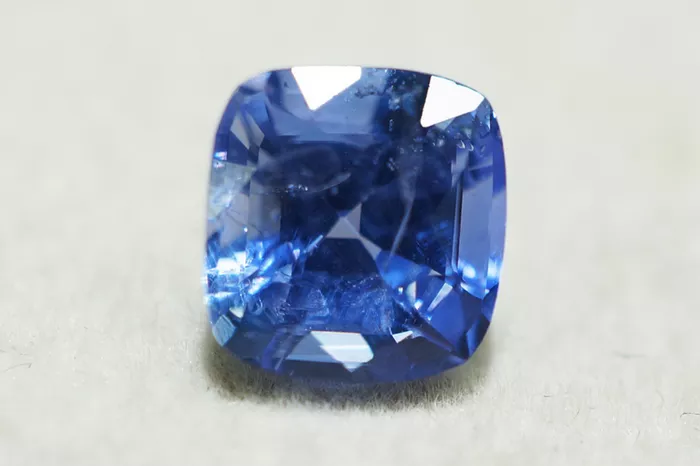Star sapphires, with their mesmerizing asterism, have captivated jewelry enthusiasts for centuries. However, determining the authenticity of these gemstones can be a daunting task for the untrained eye. Whether you’re a seasoned gem collector or a novice admirer, understanding the key indicators of a genuine star sapphire is essential. In this guide, we’ll delve into the intricacies of identifying real star sapphires, covering visual inspections, testing methods, and distinguishing between synthetic and natural varieties.
Understanding Star Sapphire
Star sapphire derives its name from the stunning star-shaped phenomenon, known as asterism, which appears when light reflects off microscopic rutile inclusions within the stone. This optical effect creates a six-rayed star that moves across the gem’s surface as it’s rotated. While sapphires are typically blue, they can also occur in various colors, including pink, orange, purple, and gray.
Visual Inspection
A thorough visual examination is the first step in authenticating a star sapphire. Here are key aspects to consider:
Star Quality: Examine the star’s clarity, symmetry, and intensity. A genuine star sapphire will display a sharp, well-defined star that extends to the edges of the stone. The rays should be evenly spaced and free from interruptions.
Color: Natural star sapphires exhibit rich, vivid hues with subtle variations. Be wary of stones with unnatural colors or overly vibrant hues, as they may be synthetic or treated.
Inclusions: While inclusions are common in natural gemstones, excessive flaws or irregular patterns could indicate a synthetic or lab-created stone. Look for natural imperfections like rutile needles or tiny crystals within the gem.
Transparency: Hold the stone up to light and observe its transparency. Natural star sapphires often possess a certain level of transparency, allowing light to penetrate and illuminate the star effect.
Origin and Certification: Consider the gemstone’s origin and accompanying certifications. Sapphires from renowned sources like Sri Lanka, Myanmar, and Kashmir are highly valued. Additionally, certifications from reputable gemological laboratories provide assurance of authenticity.
How Can You Tell if a Star Sapphire Is Real
For further confirmation of a star sapphire’s authenticity, various testing methods can be employed:
Refractive Index (RI): Measure the gem’s refractive index using a refractometer. Natural sapphires typically have an RI ranging from 1.760 to 1.778, depending on their chemical composition. Deviations from this range may indicate synthetic or treated material.
Specific Gravity (SG): Determine the gem’s specific gravity by weighing it in air and then in water. Natural sapphires typically have an SG around 3.99, while synthetic counterparts may vary. Significant deviations suggest potential synthetic or treated material.
UV Fluorescence: Expose the gem to ultraviolet (UV) light and observe its fluorescence. Natural sapphires may exhibit weak to moderate fluorescence, while synthetic counterparts often display stronger fluorescence due to certain manufacturing processes.
Polariscope Examination: Use a polariscope to analyze the gem’s optical properties under polarized light. Natural star sapphires will typically show distinct patterns and characteristics, whereas synthetic stones may exhibit uniformity or anomalous behaviors.
Synthetic vs. Natural
Distinguishing between synthetic and natural star sapphires requires careful scrutiny:
Appearance: Synthetic star sapphires may lack the subtle nuances and imperfections found in natural stones. They may appear too perfect or exhibit uniformity in color and clarity.
Inclusions: While both natural and synthetic sapphires can contain inclusions, their nature and distribution differ. Natural inclusions often have irregular patterns and characteristics, whereas synthetic inclusions may appear more uniform or artificial.
Manufacturing Processes: Synthetic star sapphires are typically produced through various methods, including flame fusion, flux growth, and hydrothermal synthesis. Knowledge of these processes can aid in identifying synthetic specimens.
Price Discrepancies: Synthetic star sapphires are generally more affordable than their natural counterparts. Suspiciously low prices should prompt further investigation into the gem’s authenticity.
Conclusion
Authenticating a star sapphire requires a combination of visual inspection and scientific testing. By scrutinizing key characteristics such as star quality, color, inclusions, and optical properties, one can confidently discern between genuine and synthetic specimens. Additionally, consulting with reputable gemologists and relying on certifications from established laboratories can provide added assurance. With diligence and expertise, enthusiasts can enjoy the timeless beauty of genuine star sapphires with confidence.


